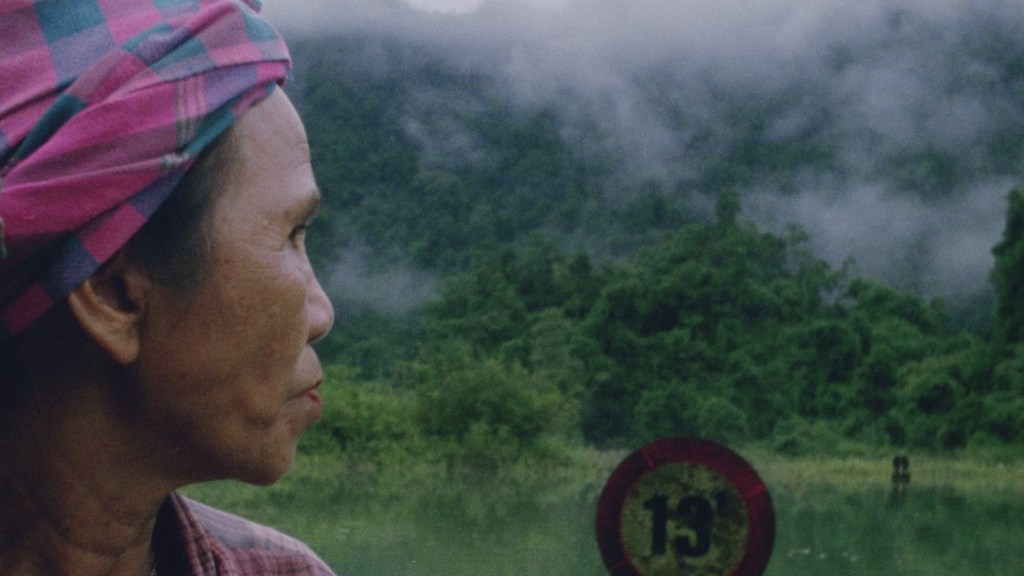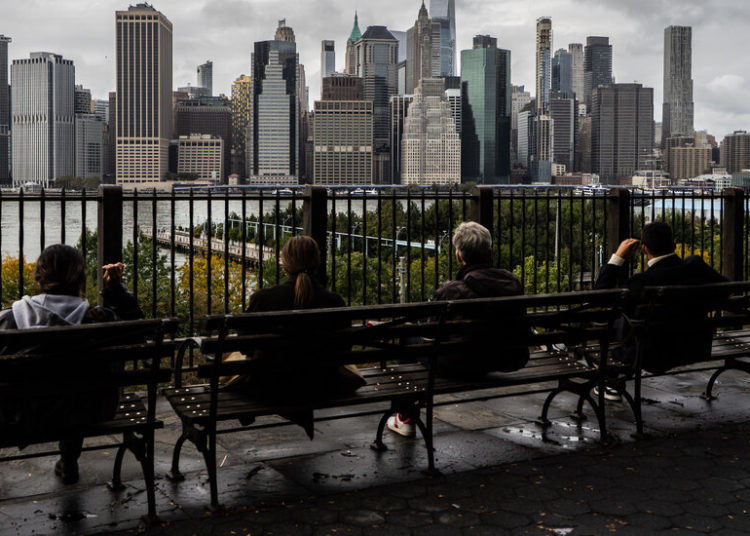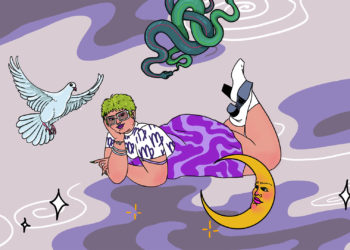Vietnamese filmmaker Truong Minh Quy became an instant arthouse favorite at Cannes in 2024 with his impressive third feature Viet and Nam. Just over a year later, Quy is back with a new project, co-directed with his frequent collaborator Nicolas Graux (Century of Smoke).
Hair, Paper, Water…, or Tóc, giấy và nước…, in the original Vietnamese, debuts this evening in the Concorso Cineasti del Presente Competition at Locarno.
Shot over three years on a vintage Bolex camera, the film is a rich portrait of an elderly, unnamed woman who, born in a cave more than 60 years ago, now lives in a village caring for her children and grandchildren. The film captures her daily life and the transmission of her fragile native language, Rục, to the younger generations, as she dreams of her deceased mother calling her home to her mountain cave.
The film was produced by Thomas Hakim and Julien Graff of Petit Chaos, the company behind Payal Kapadia’s groundbreaking feature debut All We Imagine As Light, alongside Julie Freres. Italian-based sales company Lights On is handling the project, which has been a significant point of intrigue at Locarno.
Graux and Truong previously co-directed the short Porcupine (2023), which premiered at Rotterdam and won the jury prize for best artistic contribution at Pink Screens Film Festival.
Speaking to us ahead of today’s premiere, the pair discusses how their professional collaboration began, why they decided to shoot Hair, Paper, Water... using a vintage Bolex camera, and how what they described as cinema’s rapidly changing relationship to techonology shaped their film.
“This discussion about technology is not purely aesthetic; it’s not about which film looks digital or filmic. The language of cinema has changed,” Quy explains.
Read the interview below. Locarno ends on August 16.
DEADLINE: How did you two meet?
NICOLAS GRAUX: We met while Quy was studying in France. We met in Brussels just before COVID. We lived together throughout the pandemic and began showing each other our previous works and exchanging ideas. I saw The Tree House, Quy’s previous documentary. He made that before Viet and Nam. The main character of that film is also the main character in Hair, Paper, Water. Quy told me that during the production of The Tree House, she had once told him that if the valley gets flooded, she would go back to her cave by boat. That image stuck in our heads, and we thought it could be another film. That’s how we built the idea of this movie.
TRUONG MINH QUY: At the beginning of this process, we accidentally found a Bolex camera in our room under a bed. It belonged to Nicolas’s friend and had been there for a few years. We’d both shot on film before, but never on a Bolex, which is very small and limited in its capabilities. It’s a very vintage camera. So when we discovered that camera and the idea of the woman traveling back to her home on water, we knew we would use the Bolex.
DEADLINE: Wow, did you shoot with just one Bolex? They’re quite temprimental aren’t they?
GRAUX: We had two Bolex cameras. With a Bolex, you only have three-minute rolls. And each time you use the crank, you can shoot for about 30 seconds maximum.
QUY: It’s like TikTok.
GRAUX: It’s primitive TikTok. On one side, you have to be careful about what you shoot because you can’t redo it several times. Conversely, it also frees you because you know that the camera itself is shaping the film’s language. For example, during production, I was able to react to what I was seeing around me, like filming a dog sitting next to me for 15 seconds or a hibiscus flower under the rain. These moments may not have narrative functions, but they give shape to the film.
DEADLINE: The Bolex can’t record sound right? How did you get around that? The film has such a vivid soundscape.
QUY: We worked with three different sound recordists. There is no synchronized sound on the Bolex. And it’s impossible to use a clapperboard because you only have 30 seconds to shoot, so all the sound in the film was pre-created sound on a set.
DEADLINE: And when did you shoot this? How long did it take? Can you talk me through the production. Was it before Viet and Nam?GRAUX: We had two main shooting periods with a two-year gap in between. That’s why, in the film, you see that suddenly the boy had grown. That’s not something we planned, but we came back to the village two years later because we knew we wanted to shoot more.
QUY: The first shoot was just before Viet and Nam in 2022. And we finished shooting in December 2024.
DEADLINE: Did you find it easier to build the production and raise funds during the second shoot because of the Viet and Nam success?QUY: When we started financing the film, we decided, with Thomas and the other producers, that we didn’t want it to be big. We just wanted to find enough money so we can have time. And the crew in Vietnam was very small. We had four or five people. For me, it was lucky that I decided to shoot this film before Viet and Nam. If I had to start now, I don’t think I would have enough energy to do this.
DEADLINE: As the film unravels, it becomes clear that the seemingly mundane aspects of the characters’ lives are the material functions of passing down traditions like language. Was that narrative clear from the start?
QUY: During the first shoot, we knew that we would like to do something with the language, but we weren’t so sure how. It became clearer during the editing process between the first and second shoot. That’s when we went back and built the film around the language. The construction of the film is actually super basic. You see something on screen, and then you hear a word to describe that thing. It’s like a visual dictionary. And we like that, the relationship between image and sound. I actually spoke with the main character from our film yesterday, and she had a visitor, an archivist who had come to record the language. It’s great that people are also interested in archiving her language.
DEADLINE: It’s interesting that you describe it as basic. I’d argue that it may be basic, but it feels revelatory because cinema that truly functions as visual communication is so rare these days.
QUY: Yes, this film calls back to previous cinema traditions like silent movies, family movies, and filmmakers like Jonas Mekas. We didn’t intend to create a home movie. However, one thing that changed during the three years of production is the rapid change of technology in relation to filmmaking. People have already stopped talking to each other and now talk to computers. This discussion about technology is not purely aesthetic; it’s not about which film looks digital or filmic. The language of cinema has changed. I don’t care if this film is good or not. This film is instead about making a project that has something to say or holds qualities that stay with you. And there’s something human in that.
DEADLINE: How would you like this films to be seen by audiences. I could see it in the gallery space, for instance.
GRAUX: For us, it’s quite clear that it’s for cinema, especially because this film brings our main character back to her cave. There is darkness in the cave, and that is a feeling that you only get in cinemas when you face the big screen.
The post Truong Minh Quy And Nicolas Graux On The Story Behind Their Locarno Title ‘Hair, Paper, Water…’ & How Technological Shifts Are Affecting Filmmaking: “The Language Of Cinema Has Changed” appeared first on Deadline.




